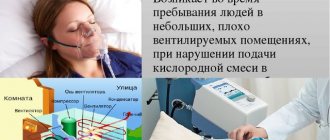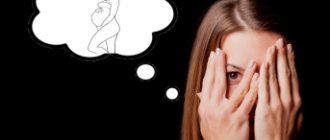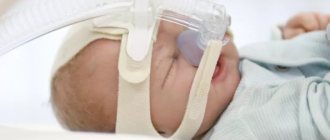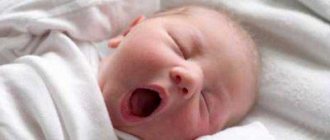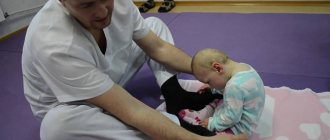Tremors are uncontrollable movements caused by involuntary muscle contractions. The symptoms most often appear in the hands and head. The causes of the disease are various conditions. In some cases, tremor is physiologically temporary. However, more often uncontrolled movements worsen the quality of life.
According to the international classification of diseases ICD-10, tremor is coded G25. Depending on the cause, the following disease codes are distinguished:
- G25.0 - essential;
- G25.1 - while taking medications;
- G25.2 - intentional;
- G25.3 - myoclonus;
- G25.4 - chorea;
- G25.5 - other types of chorea;
- G25.6 - tics due to medications;
- G25.8 - specified extrapyramidal and movement disorders;
- G25.9 - unspecified extrapyramidal and movement disorders.
You can undergo a full course of examination in Moscow to identify the causes of tremor at the Yusupov Hospital. The clinic has modern equipment that meets international standards. Doctors at the neurology clinic provide complex therapy for tremor using the most effective medications, physiotherapeutic procedures, and therapeutic exercises. Initially, neurologists establish the cause of uncontrolled movements and eliminate it. Doctors from various specialties take part in the treatment process: neurologists, rheumatologists, endocrinologists, and rehabilitation specialists. Severe cases of tremor are discussed at a meeting of the expert council with the participation of candidates and doctors of medical sciences, doctors of the highest qualification category.
Causes
Tremors in the hands and head can occur due to various reasons. The importance of identifying the etiological factor lies in the need to determine appropriate treatment. Among the main causes of tremor are:
- Osteochondrosis. Due to pinching of the spinal nerve fibers, circulatory and nutritional disorders occur. Along with tremor, swelling of the face and cardiovascular disorders often appear;
- Alcohol and drug addiction. Taking excessive amounts of alcohol or medications can cause tremors;
- History of trauma. Damage to the nerve roots due to trauma is often reflected in the form of tremors;
- Dysfunction of the central nervous system. The tremor may begin as mild twitching. As the condition worsens, the severity of the symptom increases;
- Psycho-emotional experience. Most often, tremors due to stress occur in infants. This is a variant of the norm if the symptom appears sporadically.
- Excessive mental stress. Worries teenagers or students during exam periods. If severe headache, loss of coordination, aggression or apathy appear along with tremor, you should consult a doctor;
- Degenerative changes in the brain. Diseases such as Parkinson's disease and dementia can be accompanied by tremors. You can control the severity of symptoms with the help of medications that are selected by your doctor.
Diseases that cause trembling of the limbs
There are various diseases, the presence of which can lead to tremor. Among them are:
- Endocrine pathology: hyperparathyroidism, thyrotoxicosis, pheochromocytoma, hypoglycemia;
- Strokes of various origins;
- Infectious diseases: encephalitis, neurosyphilis;
- Metabolic disorders: Wilson-Konovalov, Hallervorden-Spatz disease;
- Tumors: angiomas, cancer, hematomas;
- Polyneuropathy of various origins.
- Neurological pathology: multiple sclerosis, encephalopathy, cerebral palsy, Alzheimer's disease, Parkinson's disease, Pick's disease, Huntington's chorea, cerebellar degeneration.
In most cases, tremor is a symptom of Parkinson's disease. There is an opinion that this is a problem for older people (previously this was considered the norm). But essential tremor (also called “hereditary”) now occurs in young people, and the proportion of such cases reaches 20%. Parkinsonism ranks second among neurodegenerative diseases. It is second only to Alzheimer's disease. 8 out of 10 cases of Parkinson's disease develop unnoticed and usually manifest themselves only in disturbances in motor activity: rigidity or increased muscle tone, stiffness of movement.
Tremors are not always associated with Parkinson's disease. It often occurs in the case of autoimmune processes or dysfunctions of the central nervous system, endocrine disorders, and may be a consequence of taking medications. Neurologists use the latest laboratory and instrumental studies to determine the cause of tremor. If tremor is caused by disturbances in the functioning of the central nervous system, then it cannot be treated, but modern drugs significantly reduce the manifestations of the disease and improve the patient’s quality of life.
Tremor as a hereditary disease
Essential tremor is one of the types of pathological forms of tremors. The development of essential tremor is associated with the mutation of certain genes. The disease is inherited in an autosomal dominant manner, so the likelihood of developing tremor in women and men is the same.
The main feature of essential tremor is the high risk of developing the disease in the patient’s children and grandchildren. In this case, signs of the disease begin to be observed at an early age. A gene mutation that has not previously appeared in a family may occur spontaneously in one of the members. In this case, a sporadic form of the disease develops.
If a patient comes to the Yusupov Hospital with complaints of body tremor, the causes of the disorder are established during an examination by a neurologist and highly informative studies.
Make an appointment
Causes of internal tremor
Internal tremors in the body are a common phenomenon that can be caused by a sharp drop in temperature. The development of internal tremor occurs as a result of the production of hormones in a stressful situation for the body. These hormones help overcome unpleasant conditions, but they may not be fully used. A short tremor that occurs as a result of an excess of hormones in the body does not pose a danger to human health.
Severe body tremors may indicate the development of a pathological process in the body. Tremor brings discomfort to a person; in most cases, it is difficult to cope with pathological tremor on your own. Experienced specialists at the Yusupov Hospital determine why the whole body tremor developed in this patient using modern diagnostic equipment. Neurologists at the Yusupov Hospital help patients stabilize their nervous system and improve their quality of life using the achievements of modern medicine.
Expert opinion
Author: Georgy Romanovich Popov
Neurologist, Candidate of Medical Sciences
Almost every person has experienced tremors, for example, when being in the cold or before an exciting event. If the tremor does not stop for a long time, you need to be examined. Usually it is a symptom of Parkinson’s disease and is considered to be a problem for older people (it used to be the norm), but if we talk about essential tremor (also called “hereditary”), now it also occurs in young people, and the proportion of such cases reaches 20%.
Parkinson's is in second place among neurodegenerative diseases, second only to Alzheimer's disease. 8 out of 10 cases of Parkinson's disease develop unnoticed and usually manifest themselves only in disturbances in motor activity: muscle rigidity or hypertonicity, stiffness of movement.
Tremor is not always associated with Parkinson's disease; it can often indicate serious autoimmune processes or disorders of the central nervous system, endocrinological disorders, or side effects from taking medications. In any case, you need to undergo an examination and first of all check the brain using MRI, CT, and EEG.
If tremor is caused by disturbances in the functioning of the central nervous system, then it cannot be treated, but modern drugs significantly reduce its manifestations and improve the patient’s quality of life.
What to do if a newborn’s chin shakes when crying?
Crying is stressful for a baby, so shaking is a response to stimuli.
What to do if a newborn’s chin shakes when crying:
- Do not overcool your child; dress him according to the weather. When a baby screams or cries, under no circumstances should you calm him down with a rattle. This further weakens the child’s nervous system. Pick him up and rock him. Try to keep the house calm, without shouting, scandals or loud sounds.
- When performing a massage, turn on calm, classical music. The child should get used to white noise, it calms him down. In the future, the child will not need silence in order to fall asleep.
- He will fall asleep calmly in fairly noisy conditions. However, the sounds should in no case be sharp or very loud. Avoid turning on bright lights during feeding periods at night. Leave the night light on, or dim the lights as much as possible.
The baby is crying
Degrees
Determination of the degree of tremor is required to establish the severity of the disease. Based on this criterion, the need to prescribe one or another therapy is judged. Tremor is divided into:
- Minor. Rare attacks that recur at regular intervals. The symptom does not affect the patient's quality of life.
- Moderate. Tremor prevents small movements. In this regard, the quality of life and ability to work decreases.
- Significant. A pronounced pathological symptom is the cause of disability. The patient cannot care for himself due to lack of control over movements.
My baby's chin is shaking, what should I do?
If there are symptoms that cause concern, be sure to contact a neurologist. There are several mandatory examinations, one of which is at 3 and 6 months.
The baby's chin is shaking, what to do:
- Usually the child is prescribed sedatives, such as Glycine, Pantogam. Relaxing massages and baths are also often recommended. If necessary, the doctor will write out a referral for a special massage. It is carried out in entire courses; if necessary, parents can master massage techniques themselves during a consultation with a specialist.
- Be sure to follow all the doctor’s recommendations, as the child’s health and development directly depend on this. In order for the baby to develop normally, be sure to follow all the rules and organize a daily routine. Bathing in a bathtub with a small inflatable collar is very beneficial for a child. Thus, this allows the child to move his arms and legs freely and swim.
- Water has a very good effect on the child’s muscular system, relaxing it. After such a bath, the child very often falls asleep. Try to massage 1 hour before feeding. In no case should you do it before bed, as it stimulates and can cause awakening and sleep disturbances. It is best to massage immediately after waking up, 1 hour after feeding, or an hour before it. If the baby screams, worries, or resists, postpone the massage until the child calms down.
After feeding
Varieties
Tremors are classified according to causes and symptoms. In accordance with this, the following forms of pathology are distinguished:
- Essential. Most often it is hereditary. It is considered a benign symptom. Occurs in people over 60 years of age. The causes of essential tremor are not fully understood.
- Rest tremor. Characteristic of Parkinson's disease. Tremor appears in the hands, rarely in the legs, chin, and lip. This type of pathology is characterized by unilateral damage.
- Mesencephalic. Combined type of tremor. Occurs as a result of stroke, traumatic brain injury, tumor formations in the skull, multiple sclerosis.
- Psychogenic. The provoking factor for the appearance of this type of tremor is stress. The severity of the symptom depends on the strength of psycho-emotional stress.
Why does a newborn's chin shake when at rest?
If there are no irritants, then shaking is a symptom of a neurological disease.
Why does a newborn's chin shake when at rest?
- Difficult birth . Fetal hypoxia, vacuum, squeezing out crumbs often cause birth injuries and neurological disorders. Thus, strong pressure is placed on the child’s skull, which can result in hematomas, hemorrhages and intracranial pressure. Which negatively affects the nervous system of the baby and is a pathology.
- Difficult pregnancy , sudden cessation of psychotropic drugs, alcohol and cigarettes. That is why pregnant women are not recommended to suddenly quit smoking, but to do it gradually so that the child does not go into shock or have problems with nerves.
- Infections in pregnant women . If a woman has suffered from some illness in an interesting position, this may affect the child’s health. The virus greatly weakens the child’s system of nerve endings and can cause various pathologies and problems in the baby’s organs and systems.
Baby
Diagnostics
The sooner the study is carried out, the faster the causes of tremor can be established. Doctors at the Yusupov Hospital conduct a full range of examinations necessary to diagnose tremor. New equipment allows you to quickly and effectively determine the causes of the disease and conduct a course of appropriate therapy. According to international recommendations, to identify the etiological factor of tremor, the following examinations are required:
- CT. Thanks to the study, it is possible to identify pathological foci in the brain.
- Positron emission tomography. Allows you to assess the functional ability of the parts of the brain responsible for coordination of movements.
- MRI. Informative research method. Allows you to identify changes in the structure of the brain at the initial stages.
- Electroencephalography. A research method based on recording the bioelectrical activity of the brain.
- Electromyography. A study prescribed to determine the functional capacity of the neuromuscular system.
The scope of diagnostic measures is determined individually. It depends on the severity of the condition, the age of the patient and the presence of concomitant diseases.
When does tremors become dangerous?
Infant tremor is observed for the first time at 2 months of a child’s life. Sometimes the phenomena disappear at 4 months. In premature babies, chin trembling can be observed up to 1 year. If the symptoms do not go away for up to 6 months, are accompanied by the appearance of perspiration on the skin, increasing intensity and too violent a reaction to external stimuli, this is already a deviation. Spontaneous movements and convulsions can be dangerous.
Parents should be wary if the chin shakes for more than 30 seconds while crying. Simultaneous trembling of the legs, arms and head is also considered abnormal. The manifestation of these symptoms may indicate the presence of a pathology, but there is no need to panic. In infancy, such conditions can be treated easily and without consequences.
A child under 1 year of age needs regular examinations by a neurologist. Don't miss scheduled consultations. They are usually prescribed at the ages of 1 and 3 months, at six months and upon reaching 1 year. During these important periods, specialists evaluate the baby’s motor activity, his emotional state, muscle tone, reflexes, and the functioning of his senses. If deviations are detected, the necessary treatment is prescribed.

